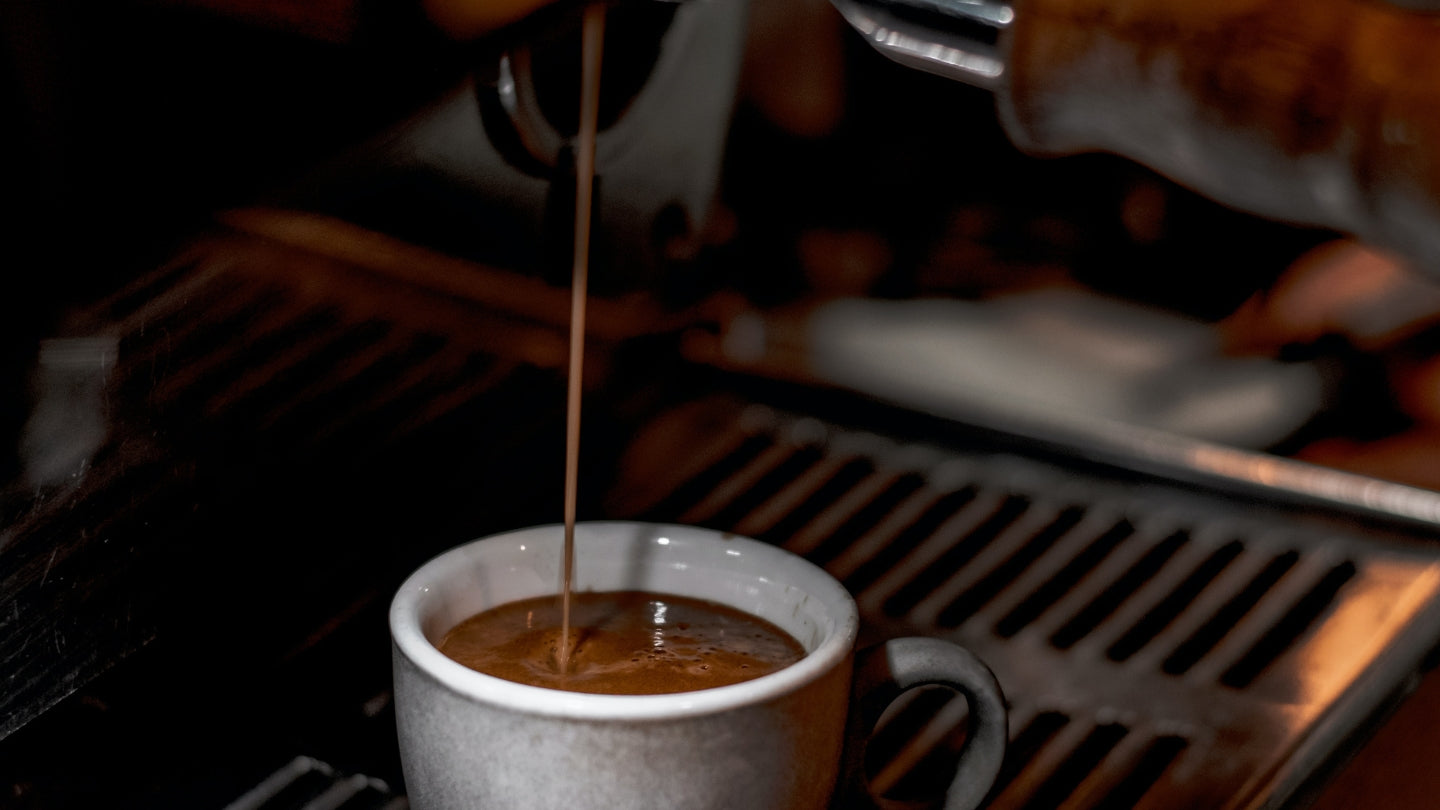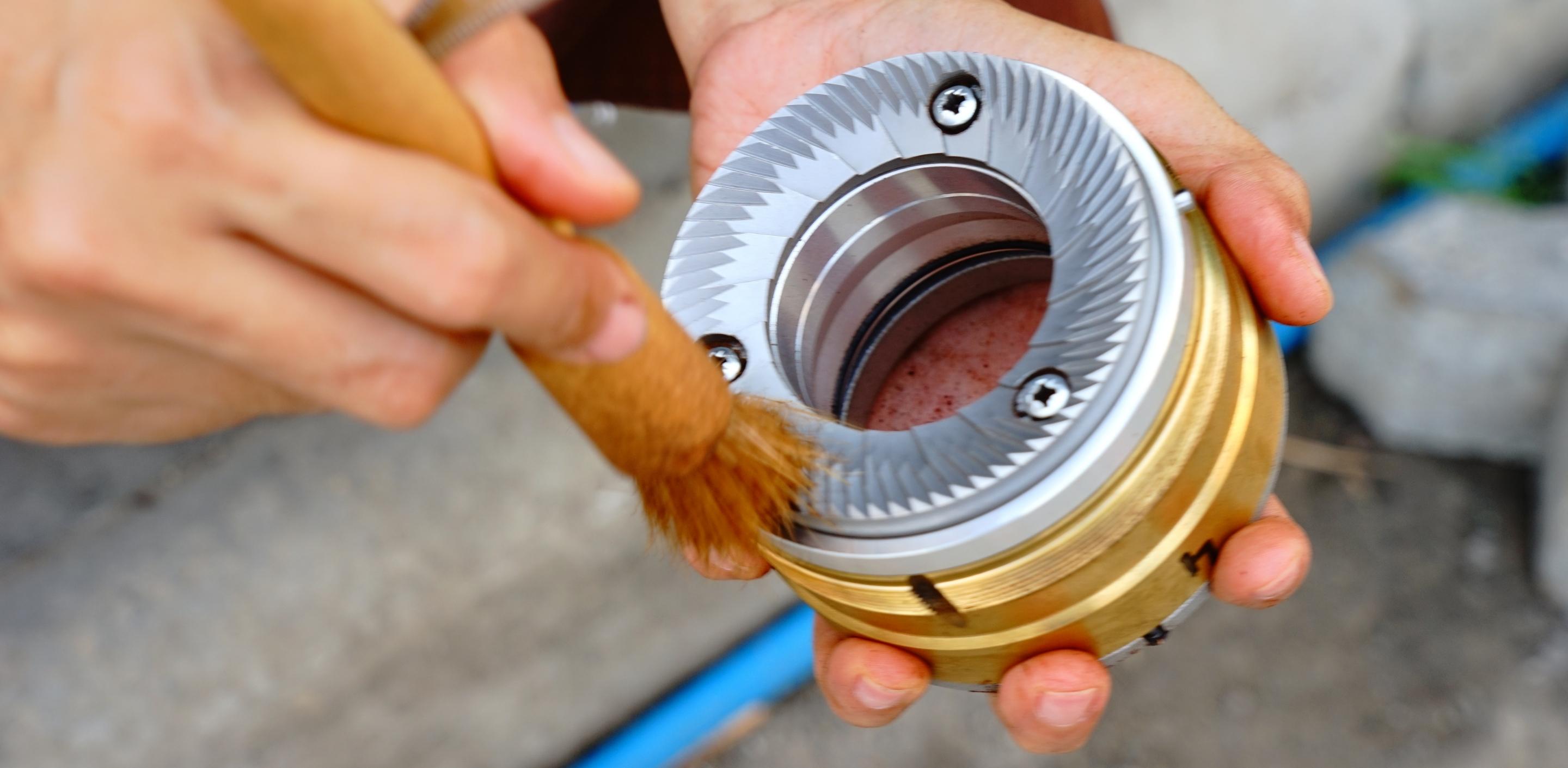Stove Top / Moka Pot Brew Guide

Equipment
-
Stove-top / Moka Pot / Caffettiere
Moka pots come in a variety of sizes. Each individual pot is designed to be used with a particular amount of coffee and brew a particular amount of liquid.
As with other brewing methods, your dose of coffee is something that you want to keep consistent unless you’re deliberately experimenting with it.
A good rule of thumb is to use as much coffee as will fit flush in the Moka pot’s filter if you put a little bit in at a time and tap the apparatus to settle it. The ground coffee can even be very slightly domed.
The amount of water you use in a Moka pot is also dependent on its size. Again, a good rule of thumb to start is to fill the lower section with water to the bottom of the valve.
Ingredients
-
Coffee. Moka pots will work with most styles of roasted coffee. Pick one that suits you. The amount you’ll need will depend on the size of pot that you have.
- Filtered water. The amount of water you use will depend on the pot that you have.
Method
- Separate the Moka pot. Fill the lower portion of the pot with water up to the bottom of the valve, then insert the filter basket.
- Grind your coffee medium-fine (not as fine as for an espresso but finer than for a pour over) and fill the filter of the pot with it, settling the coffee by tapping the pot gently as you do. The surface of the coffee should be flush with the top of the filter.
- Screw on the top section of the pot and place the pot on a stove on medium heat until the coffee begins to bubble and extract into the upper chamber. Remove from heat immediately.
- Pour the coffee into the desired receptacle and mix with milk or water to the desired consistency.
Would you like to know more?
So you’ve made some coffee in a Moka pot, but you weren’t overly enthused about the result. It happens. Here’s a bunch of stuff you can try if you want to really knock it out of the park. Bear in mind that not every item on this list will be to your preference, but they’re worth experimenting with nonetheless!
Use better water
We can’t stress this enough. The water you use to brew makes a huge difference to the taste of your coffee - not surprising given that it makes up a far greater proportion of the final brew than the coffee solubles. A well-made V60 pour over will be about 98-99% water.
Our hometown's water is naturally very hard (high in calcium carbonates and magnesium), and doesn't lend itself to making great coffee straight from the tap. While filtered water is a good solution as it removes a good portion of the undesirable compounds in water, it doesn’t necessarily constitute the best option for coffee brewing. Pure water is generally touted as being too scarce in minerals to properly extract the soluble flavour compounds, though your mileage may vary - some roasters and coffee aficionados recommend and prefer it.
To really highlight the natural flavours in a filter roast single origin coffee, you may wish to make your own water. You can do this by getting some distilled or demineralised water and then mixing in a mineral package designed specifically for providing the right chemical balance for making coffee, or by creating your own composition from readily available household products (magnesium salts and baking soda). Many recipes are available online - the key thing to remember is to create a mineral composition that suits your preferences.
Start with hot water
Want to kick start your brew? Try boiling or nearly boiling your kettle and using hot water in your Moka pot instead of cold. This will reduce the amount of time that your ground coffee is exposed to heat and result in a cleaner, potentially less bitter brew. Bear in mind that you might need protection to handle the pot if your water is very hot.
Use a paper filter
If you prefer a really clear coffee extraction with few fines, you might like to try using a paper filter in your Moka pot. To do so, simply wet the filter paper and place over the inferior metal filter o f the top half of the Moka pot, then continue to brew as normal. The filter will mostly prevent the smallest particles of ground coffee from getting into your brew, and provide more clarity in the cup.
Alternatively, you can place a paper filter at the bottom of the portafilter, which acts as a slight diffuser on the water entering the portafilter. This can actually increase the speed at which the brewing occurs.
Aeropress filters work very well for this purpose in many of the smaller sizes of Moka pots.
Pre-infuse/Bloom the coffee
Another means of reducing the overall brewing time of your Moka pot is to wet the ground coffee once it is in the portafilter but before you begin the brewing process. This technique allows the coffee to “bloom” and will reduce the resistance it puts on the water flowing up from the lower chamber. Try combining this technique with a slightly finer grind or lighter roast degree of coffee.
Cool the bottom or pour immediately
Once the coffee has extracted into the upper chamber, your brew is done, but it can still be affected by the residual heat in the metal even if you remove the pot from the stove. To prevent this from affecting your brew, either pour your coffee into another receptacle immediately (we use a warmed teapot) or douse the bottom section of the pot in cold water to cool it.
Try coffee that is roasted lighter or darker
If you find your Moka pot coffee is bitter, you might prefer coffee that is lightly roasted, typically for a filter apparatus. If you find your coffee is too acidic or fruity, you might like an espresso roast. Give it a try.
Troubleshooting
Bitter or burnt coffee
Your coffee will be bitter or burnt if too much heat has been applied to it or too much of it has been extracted . Try some of the following:
- Grind your coffee coarser. Water and therefore heat will stay in finer coffee for longer, potentially causing it to become bitter.
- Lower the temperature of your stove. Too much heat applied too quickly can cause your coffee to become bitter.
- Check your dose. You may be trying to fit too much coffee into your apparatus, making it harder for the water to pass through. However, before you put less coffee in, try making the grind coarser.
Sour or weak coffee
Your coffee will be sour or weak and flavourless if it has not had enough heat applied to it or the water has not spent enough time in contact with the ground coffee. Try some of the following:
- Grind your coffee finer. If your ground coffee is too coarse, water will be flowing through it too quickly and not extracting any of the solubles in the particles.
- Lower the temperature of your stove. You may have the right parameters of coffee and water, but you’re still brewing too quickly and the water is passing through the coffee too quickly.
- Check your dose. You may not be putting enough coffee into the apparatus. Check that the filter basket is full and flush when you begin a brew.
The Moka pot didn’t extract at all, or extracted too little
You may have not put the correct amount of water into the pot. The physics of Moka pots are quite precise and based on air pressure in the lower chamber. If you put too much water into the pot, the water will not rise and pass through the coffee.
Try filling the bottom chamber to the base of the valve and using the apparatus without any coffee. Once the process is finished, you should end up with most of the water in the top chamber, with a little left in the bottom.Further Research and References
Coffee makers and Coffee machines
Reddit - Ultimate Moka Pot Brew Guide
Everything but Espresso, Scott Rao, 2014




